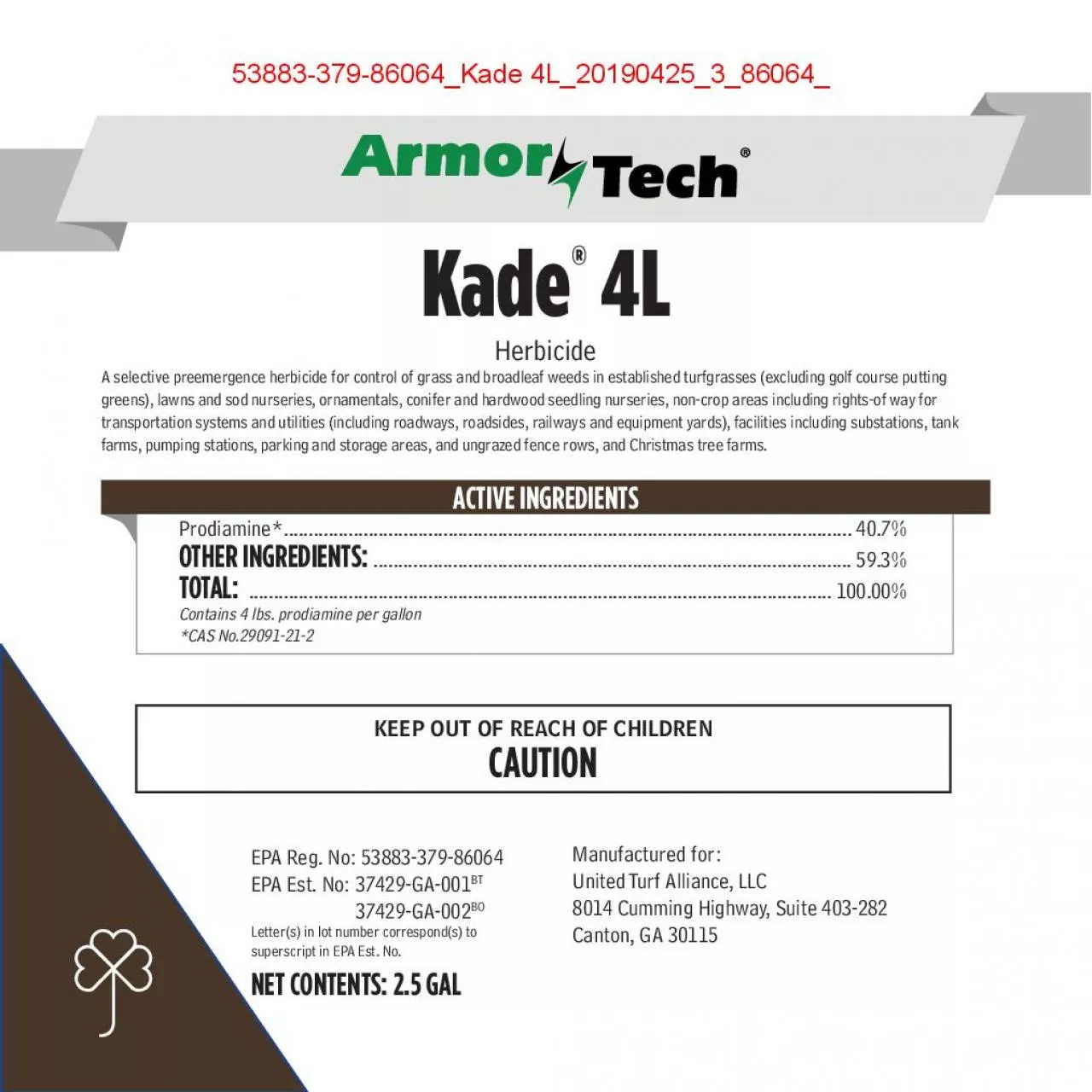PDF-5388337986064_Kade 4L_20190425_3_86064_
Author : jainy | Published Date : 2021-06-30
Kade 4L Herbicide A selective preemergence herbicide for control of grass and broadleaf weeds in established turfgrasses excluding golf course putting greens lawns
Presentation Embed Code
Download Presentation
Download Presentation The PPT/PDF document "5388337986064_Kade 4L_20190425_3_86064_" is the property of its rightful owner. Permission is granted to download and print the materials on this website for personal, non-commercial use only, and to display it on your personal computer provided you do not modify the materials and that you retain all copyright notices contained in the materials. By downloading content from our website, you accept the terms of this agreement.
5388337986064_Kade 4L_20190425_3_86064_: Transcript
Download Rules Of Document
"5388337986064_Kade 4L_20190425_3_86064_"The content belongs to its owner. You may download and print it for personal use, without modification, and keep all copyright notices. By downloading, you agree to these terms.
Related Documents

